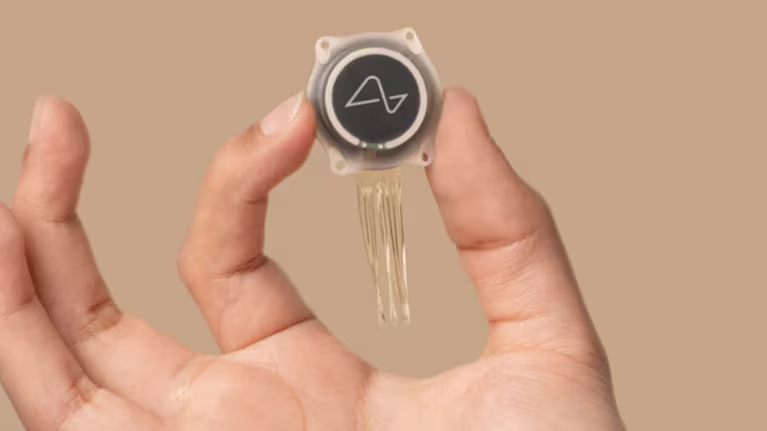Neuralink has had a rollercoaster ride in the last few years with many ups and downs. They just recently deployed a brain implant into a second clinical trial participant. So it’s a good time to update where things stand.
This more general area of science is often called brain-computer interface (BCI) research. The implants are called BCIs as well. Several firms are working on BCIs for humans.

Neuralink ups
The ups or encouraging news for Neuralink have included getting enough preclinical data to win an FDA OK for a clinical trial.
That’s a huge deal. For a while, it seemed like there could be much longer delays in getting the green light from regulators.
They have also started the trial, which is also a big step. Some firms get approvals but then there are delays before starting.
Also, overall, the company’s work is important and, if ultimately successful, would fill a crucial need for many people including some with spinal cord injuries.
Neuralink challenges
At the same time, the firm has also had many issues and still faces tough questions, not all of which it is answering. It isn’t always easy to get all the details of what is going. For example, for quite some time they had no Clinicaltrials.gov listing. Recently I finally saw that the Neuralink trial is listed. The listing has some useful information, but in my view, it remains incomplete. It’s lacking some key details.
The preclinical work the overall team did in monkeys reportedly violated both practical and ethical standards at times. I’m still not clear on why this happened. Were they and their larger team rushing things? Did owner Elon Musk push them to go too fast?
The first participant to receive a Neuralink BCI, Noland Arbaugh, started out doing well, but then most of the threads from the BCI device connecting it to his brain retracted. This limited connectivity and function. While Neuralink was able to adjust some software to compensate to some extent, the result was far from what everyone had hoped. It’s not clear that the BCI performance can be improved for Noland.
Second trial participant receives BCI
So far it seems, based on a news report this week in Nature, that the BCI in the second recipient is at least partially functional. From the piece:
“In an 8-hour long podcast released on 2 August, Musk said that the second implant is working well and that roughly 400 of its 1,042 electrodes are providing signals from the recipient’s brain. Musk did not reveal details about the implant surgery or the recipient except to note that the person has a spinal cord injury.”
I don’t have a clear sense of their expectations, but it seems at face value that only around 40% of the electrodes providing data would not be a great result. Is that “working well”?
Human-machine interface
These kinds of challenges in early clinical trials including for investigational devices are not unusual. Unexpected things can happen and the trial can adapt. However, a big question is whether this could have been identified as a problem in large animal studies and addressed at that point. Again, was the preclinical work incomplete or rushed?
Some folks are excited about the idea of the firm’s implant work ultimately leading to not just treatments, but also brain enhancements for humans who don’t have neurological conditions.
Whether you see that possibility as a pro or con likely depends on your risk tolerance and how you view the idea of human enhancement more generally.
Musk has big ambitions for this research beyond paralysis:
“Musk said in the podcast that Neuralink’s ultimate goal is a BCI that allows humans to enter symbiosis with artificial intelligence. And he predicted that future BCIs will help people with psychosis, seizures and memory loss.”
I feel like there’s some overexuberance there.
Ethical concerns
Bioethicists and some others have some big concerns about the firm’s practices, as Nature detailed:
“More immediately, Anna Wexler, a neuroethicist at the University of Pennsylvania in Philadelphia, says these predictions risk misleading potential study volunteers. “It certainly raises questions about what’s drawing these people into the studies and what they’re understanding about what they’re getting into.”
I share Wexler’s concerns. She goes into much more detail on her thoughts on Neuralink and Musk in a recent STAT News piece that I linked to below.
Overall, I view Neuralink’s BCI work as valuable but the way they are going about it raises risks for participants. They aren’t giving enough consideration to the ethical conduct of research more generally. We can expect more ups and downs.
If you are interested in human-machine interfaces more generally, check out this other recent research on robots with human brain tissue.
References
- Second brain implant by Elon Musk’s Neuralink: will it fare better than the first? Nature.
- The ethical implications of Elon Musk’s unorthodox approach to medical science, STAT News.
- Neuralink trial listing.
Great piece as always! I think the field of BCIs—and other far-fetched, “futuristic” health tech—is particularly prone to pathos-based appeals and over-exaggerations. Listening to interviews with Noland Arbaugh (the one from the podcast Hard Fork is a great example), it’s difficult not to really feel the excitement for the field, any ensuing problems (such as the threads retracting) be damned. At the same time, this only makes obvious lapses in ethical judgement seem more acceptable—and perhaps even noble. But then again, I suppose this over-exaggeration problem has plagued the healthcare field in general for a long time.
Have you considered creating a substack page for posts? I think it could be a great platform for your work – it is a large and diverse audience
How do I do that?